
Flying and building on the farm
Operations amongst the cow pies

How we decided on the Just Aircraft SuperSTOL
Prior to choosing our project, we’d looked at pretty much every kit built plane that is made, both in print and online, and then in person, as much as possible. I did all the internet research I could, asked friends, etc. To a degree, I did this research in a vacuum because I just don’t know that many people who own, build, or fly home builts.
The primary criteria for choosing a kit design wasn’t payload, cruise speed, or number of seats. Heck it wasn’t even cost. It was whether I fit in the plane or not. You see, I’m 6’5″ and 200 lbs. However my height is in my torso so sitting down, I sit like a person who is 6′ 8″. That means that my head is crammed into the ceiling of almost any airplane. This includes almost all modern certified airplanes. My son, Spork, was 6′ at 13 and still growing! So even if I could tough it out and fly with my head crooked, he’s going to be in the same boat. Rather than look at this as a limitation, I felt blessed because being so tall narrowed the choices for us, making the decision easier. Even with the home built field so limited due to my height, it was still extremely overwhelming trying to pick our aircraft.
After attending Sun N Fun 2017, Oshkosh 2017, getting my tailwheel endorsement, visiting a professional RV builder, attending one of the build schools (with Spork) put on my EAA at Oshkosh in the off season, attending multiple EAA chapter meetings, visiting the few people I knew who had home builts, and getting a demo flight in two different gyrocopters and one Carbon Cub, I had the following list of possible aircraft.
Autogyro Cavalon Zenith 750 STOL Zenith 650 Van’s RV-10 Cubcrafter’s Carbon Cub Just Aircraft Highlander Just Aircraft SuperSTOL
Our requirements for the project were:
- I must be able to fit in the airplane.
- I must be able to finish the airplane in a reasonable amount of time based on my schedule (which is limited). There must be quick build, factory assist options, etc.
- Side by side seating strongly preferred.
- Ability to easily and quickly commute to KJNX, KHRJ, KFAY from my farm in Garner, NC. (i.e. very short legs.)
- Must be something my kids would enjoy flying in.
- Must be something my kids could learn to fly in.
- Should use a Rotax engine , any model.
- Should be able to operate from our farm (1200 feet, unimproved grass, obstacles on one end.)
- Ability to fly with the windows open or doors off.
- Good factory support.
- Fun to fly. Something my kids could discover the joy of flight with. Docile, forgiving, easy to fly.
- Capability for light/accidental IFR if needed.
- Well known brand that allows for resale to a known market.
So what did I learn after all my research?
Autogyro Cavalon – I thought for a good while that the Autogyro Cavalon was the one we were going to get.
I went so far as to schedule my transition training and endorsement but that unfortunately went awry due to personality issues with the instructor. I also wasn’t able to fly with the doors off due to the instructor refusing to take them off, something I was determined to do prior to putting down a deposit. I also never really did get comfortable that this thing was going to be usable on our field without having to do some improvements to the smoothness of the field. It just seemed to track fairly narrow and it seemed like bouncing the rotor around might not be the best idea. After all those limitations, scratch that one off the list.
Zenith – At Sun N Fun, 2017 Spork and I spent a good bit of time at the Zenith booth and even attended one of their classes. The Zenith aircraft had good STOL ability, a really easy build, good support, no need for taildragger experience and it’s associated risks, a good name, partnership with EAA, and the price was right. However Spork did not like the center stick with Y grips and he also ended up not wanting to build a metal skinned airplane.
The 650 was barely a contender. It couldn’t operate from our farm and it was a bit cramped. But technically I fit, barely. Scratch the 650 and 750 off the list.
Van’s Aircraft – I only fit in one RV easily and that is the RV-10. I also fit in an RV-8 which was surprising because I had sat in a customers RV-8 and couldn’t close the canopy. But the RV-8 at Sun N Fun worked fine. At Sun N Fun, I spent a ton of time at the Van’s booth. I LOVE the RV 10. It’s my new dream airplane, after a PC-12, a King Air 90, and a F4U Corsair. Of those aircraft, the RV is the one I’ll actually end up owning. I came home from Sun N Fun convinced that the RV-10 was the choice.
However it took forever to build even with the quick build options, it was really expensive, it absolutely could not operate off of our farm, and it is a metal airplane. It was pretty much eliminated in every way and I still want one. However, rather than build one, I will buy one already built once Spork goes off to college and I don’t need the capacity of the PA-32 anymore. Plan B is in place for the RV.
The RV-8 was eliminated by the tandem seating and the metal build. Plus it too wouldn’t operate off of our farm.

Cub Crafters – The Carbon Cub has a great name, and great performance. It’s everything a classic J-3 Cub is with all the modern advantages. Plus their sales people at Sun N Fun were awesome. Chip, if you ever read this, thanks for everything. I ALMOST bought a Carbon Cub solely because of you.
But the Carbon Cub had one fatal flaw, tandem seating. I don’t care if I sit tandem or side by side. Actually I do prefer side by side a bit but whatever, I don’t really care. My son? Side by side. My daughters? Side by side. My wife? Side by side. I plan on doing Young Eagles flights as well. What do kids with zero experience want? Side by side. Tandem seating killed the Cub for us. Plus as a zero time tailwheel pilot I wasn’t entirely comfortable I could land the thing that well. Bungie suspension doesn’t have dampening and that made me nervous. Can I learn? Of Course. But it’s just one more thing that was a bit unnerving. Add that to a really expensive build and we nixed the Carbon Cub.
Just Aircraft – The Just Aircraft planes had a few things going for it. It was made by some local boys, over in SC. Actually it’s nearly to Georgia but whatever, SC is just one state over so I consider it local. Being able to swing down to the factory makes a big difference if you get stuck or have a problem. I also fit in the airplane, even with side by side seating. There was one cross member in the fuselage that my head kinda got near but not on the top of my head, the back. Turbulence wouldn’t bounce me into it.
They had some quick build options and overall it’s not a terribly big build. 1000 hours at the top end of estimates. All of their STOL capabilities were certainly good enough to get in and out of the farm without any craziness and it still retained a decent cruise speed. Range? Check. Enjoyable to fly? According to Youtube, check. Rotax? Check. Just Aircraft actually checked all the boxes in our requirements and despite that, I really didn’t even consider Just Aircraft.
I wasn’t looking for a tail dragger. It was an LSA which I didn’t care about, being a certified pilot. It seemed to be a one trick pony in that it was all about off field and short field performance. Yes, I was going to be operating off field, but not like this.
In talking with the Just guys, it seemed that maybe the Highlander was a good option for me. It had good enough STOL capabilities to operate from my 1200 feet easily, but it retained some cruise speed over the tricked out SuperSTOL . Kind of the in between aircraft, not all STOL, not all Cessna 170. This was my plan for a while, a Highlander.
Then after the debacle with the Autogyro, I made arrangements to fly the SuperSTOL on the way home from Maryland.

But with the Cavalon out of play, and all the other choices eliminated, the Highlander/SuperSTOL was pretty much all I had left. I stopped at Manteo and met up with Robbie. His SuperSTOL was covered in bugs, mud, dirt, etc. It looked like someone’s Jeep they kept in the barn, one that climbed mountains and carried baby calves and feed. It was obviously a work horse.
As macho as I could, I explained to Robbie that I was a shiny side up pilot and that I didn’t really need to see the maximum performance, loosen the fillings in your teeth landings. I’d read stories of aviation journalist who’d been scared by the landings in the SuperSTOL, coming in tail first and slamming down. I had 1200 feet to operate from so just a sedate demo would be fine. I wasn’t assured that we wouldn’t be going for a carrier ride but oh well, I was here, may as well take the ride.
We climbed in and cranked up. The Rotax fired up immediately, as they do. While waiting for the oil temp to come up, Robbie said, “Let me show you something.” He throttled up, and turned right off of the taxiway blasting through the grass. He then chopped the power, stomped full left rudder, and locked the brake. The airplane skidded and pivoted on one wheel and did a perfect 180. As soon as it stopped, he powered up and repeated the demo to the right. He looked over at me and said, “You’ve now ground looped an airplane. Twice.” No muss, no fuss. No wing rocking, or prop strikes. The plane was completely stable. I was impressed.
We then took off. I have no idea how far we rolled. Not very far. It’s more about time than distance. Maybe two seconds of ground roll? We made a trip around the pattern and Robbie set up for landing.

Robbie aimed for the line that marks the beginning of the runway. He missed it a bit and landed at the front edge of the parallel white lines. We stopped and he spun 90 degrees to the left. The fillings were in my teeth and all in all it was actually fairly sedate and comfortable. It wasn’t a crash landing like on the carrier. It was more of a butterfly setting down. We were going SO SLOW that the actual landing and rollout is a non-event.
Once again, I had no idea how long we’d traveled on the rollout. It was measured in time. But when I looked where we were sitting, we were still on the white lines, as the arrow above depicts. To put that in perspective, when I’m flying a normal airplane, the second, smaller set of white lines is where I aim to touch down. So we landed, turned around to look, turned back around to take off, and took off, in less space than I normally overfly as part of a normal landing!
Robbie spun around and took off again and he gave me the controls. I flew this airplane and all I can say is it was a delight to fly. Light on the controls, well balanced, very stable. We set cruise power and saw about 105 mph. We cruised over to another area and I did some steep turns, turns around a point, etc. It was a very comfortable feeling flying this plane. Everything was just right and with the super short field performance, I felt very comfortable that we could put it down pretty much anywhere, a feeling I had when I was flying helicopters. If I could see a patch of green, I could stuff it in there. This was the same thing, a comfort that an emergency landing would be a funny story, not a trip to the hospital or worse.
We flew back to the airport and on approach Robbie said, “Let me show you something we do in Alaska when we are landing somewhere new.”
Robbie made an approach to the runway, but at about 30 feet he added in some power, pitched up, and proceeded to fly down the runway at about 20 feet off the ground, and at about 15-20 mph. He’s talking about how you look for ditches, rocks, etc, and demonstrating how controllable the airplane is all the while, walking the airplane from the left side of the runway to the right. It didn’t feel like we were hanging on the prop, just that we were proceeding down the runway at a sedate pace. I knew I’d seen this sight picture before somewhere but couldn’t figure it out, when Robbie said this was basically a “hover taxi.” That’s it! That’s what this was. We were at the height and speed of a helicopter taxiing but without the need to autorotate should the engine quit. If the engine quit on the SuperSTOl, we’d just plop down on the runway and the amazing landing gear would just soak it up.
I’d thought this entire experience would be violent and scary. It was exactly the opposite. I very quickly felt comfortable in the airplane and felt comfortable at low altitudes and low airspeeds. This airplane ticked off all the check boxes. It cost a bit more than the Highlander but it would do more than the Highlander. And with 105 mph cruise, it was fast enough to get where I needed to go. It was pure fun flying behind a Rotax and I was done.

- Brands/Models
- Buyer’s Guide
- Glass Cockpits
- Auto-Pilots
- Legacy Instruments
- Instruments
- Safety Systems
- Portable Electronics
- Modifications
- Maintenance
- Partnerships
- Pilot Courses
- Plane & Pilot 2024 Photo Contest
- Past Contests
- Aviation Education Training
- Proficiency
- Free Newsletter
SuperSTOL XL
By Plane and Pilot Updated February 22, 2016 Save Article
Related Stories
Boeing 737 200–900.

This Incredible Plane: Cessna 152 Aerobat: Spin Cycle!

Helping Your Airplane Shelter in Place
Stay in touch with Plane & Pilot
America’s owner-flown aircraft enthusiasts and active-pilot resource, delivered to your inbox!
Save Your Favorites

Already have an account? Sign in
Save This Article
Stay Inspired
- News & Publications
Just Aircraft SuperSTOL Now Comes in XL
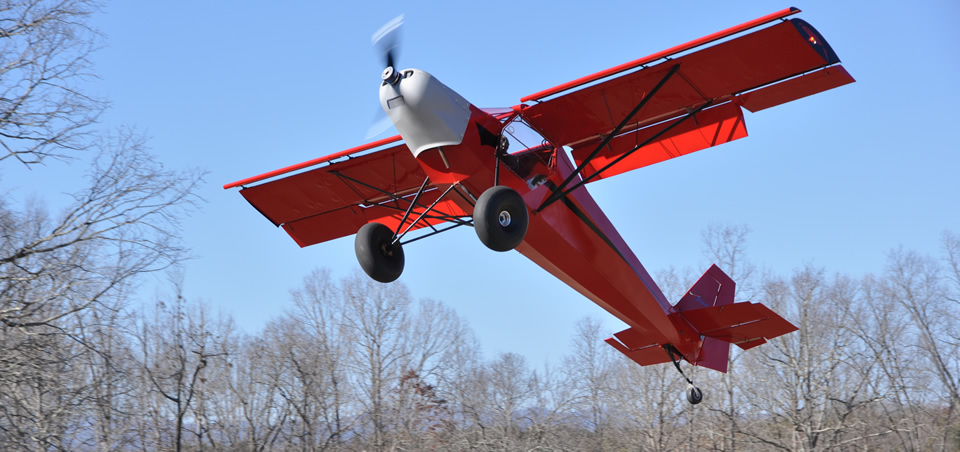
Recent Articles
June 13, 2024
June 06, 2024
May 16, 2024
May 03, 2024
May 02, 2024
March 26, 2015 - Just Aircraft has upsized its popular SuperSTOL airplane with the introduction of the Stretch XL. By adding two feet aft of the fuselage and six inches up front, the kit airplane can now handle the new UL Power 520 engine series as well as Lycoming O-320 engines for 150/160 hp.
The original SuperSTOL is powered by the 100 hp Rotax 912 (approximately 165 pounds with accessories), or the 115 hp Rotax 914, (175 pounds). The Stretch XL can accommodate engines weighing up to 315 pounds. The six-cylinder UL Power 520 weighs 255 pounds and the Lycoming O-320, 315 pounds. Appropriate engine mounts and redesigned cowlings will accompany the SuperSTOL Stretch XL kits.
“This is one of the first aircraft in the world with a UL Power 520 engine, rated at 180 hp,” said Harrison Smith, who completed Phase One flight testing in the Stretch XL. “Predictably, there’s an increase in the rate of climb and cruise speeds. The additional length in the Stretch XL provides handling similar to a high-horsepower Super Cub.”
He added that the UL Power 520 can burn autogas with up to 15 percent ethanol. “The fact that the engine has six cylinders virtually eliminates vibration,” he said.
The added length makes the SuperSTOL Stretch XL 21 feet 6 inches long. Its rate of climb with the UL 520 is 3,000 fpm, and it will cruise 109 mph at 2,600 rpm with a landing speed in the low 30s.
Just Aircraft plans to introduce the SuperSTOL Stretch XL at Sun ’n Fun, April 20-26. For more information about the XL visit JustAircraft.com .
- Flight Reports
- Builder Spotlight
- Designer’s Notebook
- Customer Service
- Reset Password
- Guidelines for Writers
- Advertise with Kitplanes
- Industry News
- Kneeboard Notes
- Homebuilder’s Portal
- Completions
- Build Series
- Aircraft Buyer’s Guide
- Buying a Used Homebuilt
- Unairworthy!
- Sign in / Join
- Free Newsletter
- Give a Gift

Just Aircraft Introduces the Highlander SuperStol
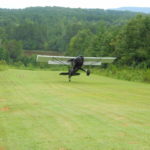
With the new wing configuration, the Highlander will cruise at 110 mph, land at 32 mph and take off or land in 150 feet. The improved landing gear, which features long strut airshocks, can handle aggressive landings at off airport sites. The wing slats, when combined with the large Fowler flaps, allow the aircraft to be flown at extremely high angles of attack, permitting it to “drop” into small or inclined clearings. All existing Highlanders can be retrofitted with the new folding SuperStol wing.
Just Aircraft Company has shipped over 300 kits to customers in the United States and foreign countries. Buildable as a taildragger or as a nosewheel aircraft, the Highlander can be fitted with regular wheels, tundra tires, skis or floats. There are a number of options for engines, although the factory has mounts and cowlings for the Rotax and Jabaru. The SuperStol has an empty weight of 720 pounds, giving it a useful load capability of 600 pounds.
For more information, visit www.JustAircraft.com , or call 864/718-0320.
RELATED ARTICLES MORE FROM AUTHOR
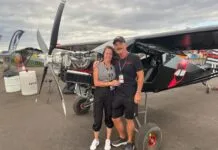
Yamaha-Powered STOL Highlander
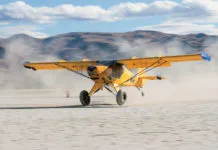
Fly It Like You STOL It!
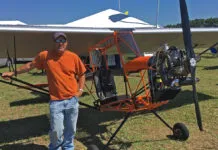
Just 103 Solo
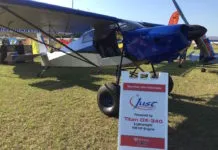
Just SuperSTOL Up Close
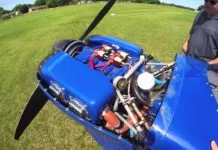
Flying Just’s Titan-Powered SuperSTOL
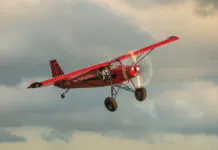
Stretching The Envelope
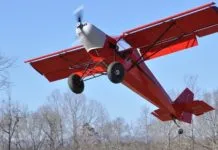
Editor’s Report from SnF – Day 3 – Tuesday, April 23
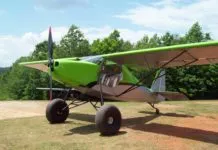
Just Aircraft Offers Spoilers Kit for the SuperSTOL
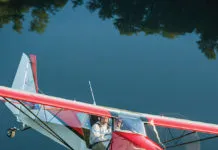
Just Aircraft’s SuperSTOL
Leave a reply cancel reply.
Save my name, email, and website in this browser for the next time I comment.
This site uses Akismet to reduce spam. Learn how your comment data is processed .
In Case You Missed it
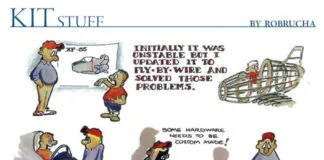
Checkpoints
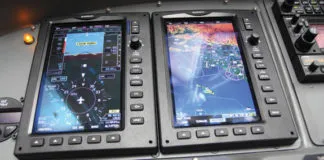
All About Avionics: EFIS Dreams 2010
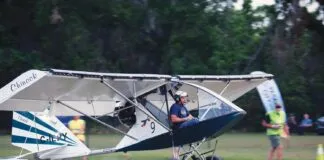
A Whole New Sun ’n Fun
- Privacy Policy
- News & Trends
- Two-seater ULM aircraft
- Just Aircraft, LLC
- Exhibitions
Two-seater ULM aircraft SUPERSTOL XL piston engine instructional kit


Characteristics
6.5 m (21'03" )
2.2 m (7'02" )
9.5 m (31'02" )
100 mph (161 km/h)
32 mph (51 km/h)
130 mph (209 km/h)
400'00" (122 m)
Description
Other just aircraft, llc products, aircraft models.

- Single-engine jet
- Piston engine aircraft
- Tandem aircraft
- Piston engine ULM
- Single-engine ULM
- 2-person ULM aircraft
- Kit aircraft
- Instructional ULM aircraft
- VLA aircraft
- Amphibious ULM aircraft
- SPECIFICATIONS
The SuperSTOL is Just Aircraft Australia's short takeoff and landing version of the Highlander
SuperSTOL Pricing (in USD)
The Highlander is our bush plane model with longer wings, taller-heavier gear & tundra tyres
Highlander Pricing (in USD)
SuperSTOL & Highlander Accessories Pricing (in USD)
- Learn to Fly
Subscriber benefits
- Advertise with us
- Latest News
- Sign up for the weekly newsletter
- Scholarships
- Pilot Careers
- Flight Tests
- Flying Adventures
- Special Features
- Top Gear: Reviews
- Full Throttle
- Instant Expert
- On Approach
- Unusual Attitude
- Latest issue
- Past issues
- FLYER Livestream
- Search the forums
- Buying & Selling
- The learning zone
- Your Dashboard
- Discounts & Offers
- Landing Fees
Join the FLYER Club and become the best-informed pilot at your airfield.
- Unlimited access to our great content, updated daily!
- Free landing fee vouchers
- Exclusive member discounts
- Member only events and webinars
- Access to exclusive member only forum areas
- Livestream Extra every Wednesday
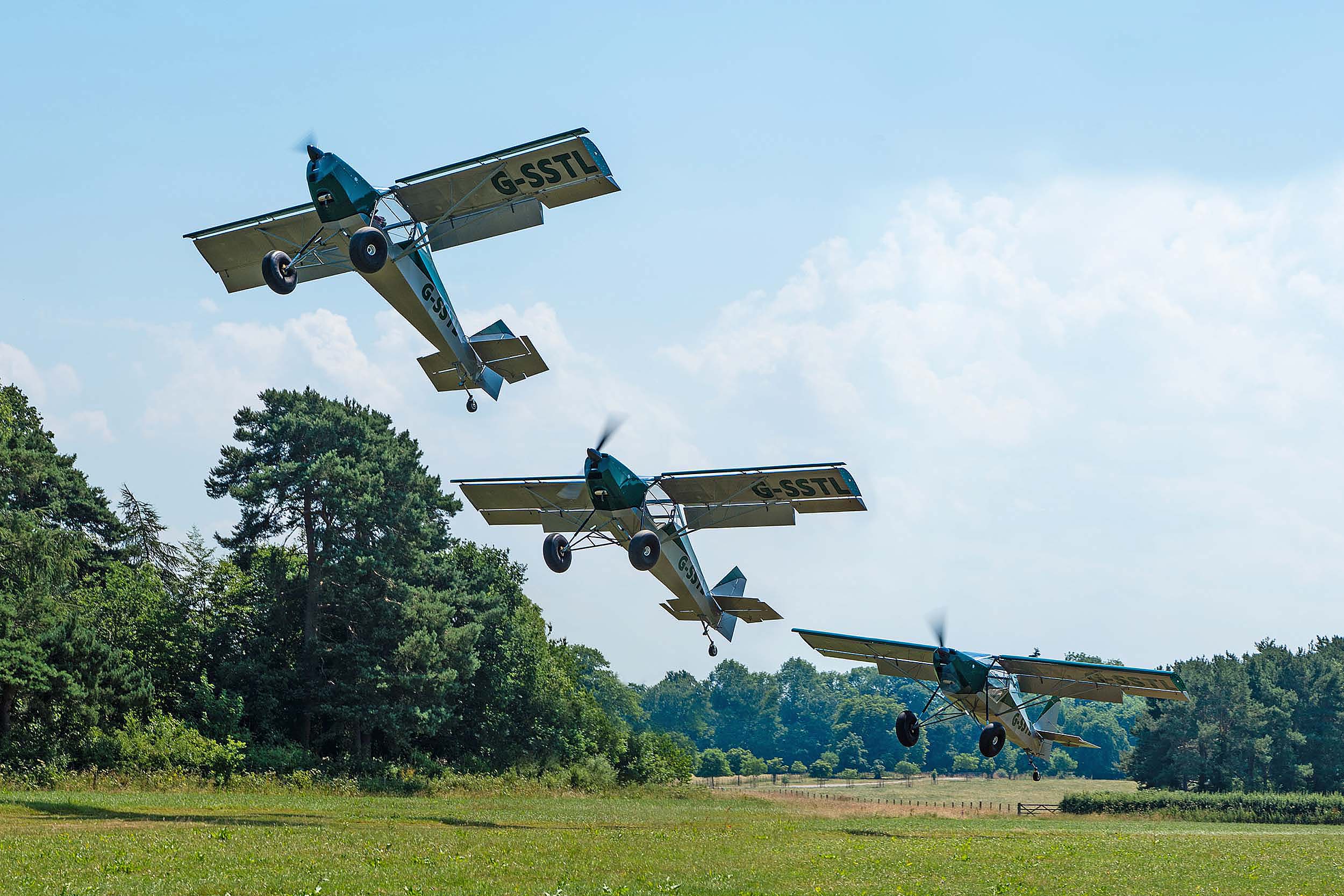
Flight Test
Putting the super in stol.
If you’ve ever dreamed of keeping your own aircraft at home and flying from your back garden, but don’t own a huge country estate, then this STOL supremo kitplane could be for you…
Words Ian Seager Photography Ed Hicks
30 May 2022
W hat do you get when you create an aircraft with wings designed to maximise lift, a massive energy-absorbing undercarriage, and a max weight of 600kg? The answer is the Just Aircraft SuperSTOL. It’s an aircraft which, in the right hands, wins competitions with take-offs of around 77ft and landings that are shorter than the length of a Cessna C172. The SuperSTOL is a machine which I don’t mind admitting that, before flying it, made me a little nervous, thanks to the edges of its flight envelope being steep angles and slow speeds a fair way beyond the edges of my aviation comfort zone!
Just Aircraft, the South Carolina-based company behind the SuperSTOL, designed it to sit in the USA’s Light Sport Aircraft (LSA) category, so that means a maximum weight of 1,320lb (600kg) a clean stall speed of 45kt or less and a maximum speed of 120kt. The SuperSTOL is Just’s development of the Highlander, which followed the Escapade, an aircraft developed in conjunction with Escapade UK. The Escapade’s DNA can be found in the Sherwood Scout, and that’s now built by The Light Aircraft Company in Norfolk.
In the US, the SuperSTOL can be supplied as a ready-to-fly LSA, or you can buy a kit and build it yourself. In the UK, only the self-build option is available through Bob Pooler, director of Avalanche Aviation , Just’s UK dealer, and it was his aeroplane, G-SSTL, which we flew from its base at Sleap Airfield. (Editor’s note: Since this was first published, Avalanche Aviation has ended its UK agency)
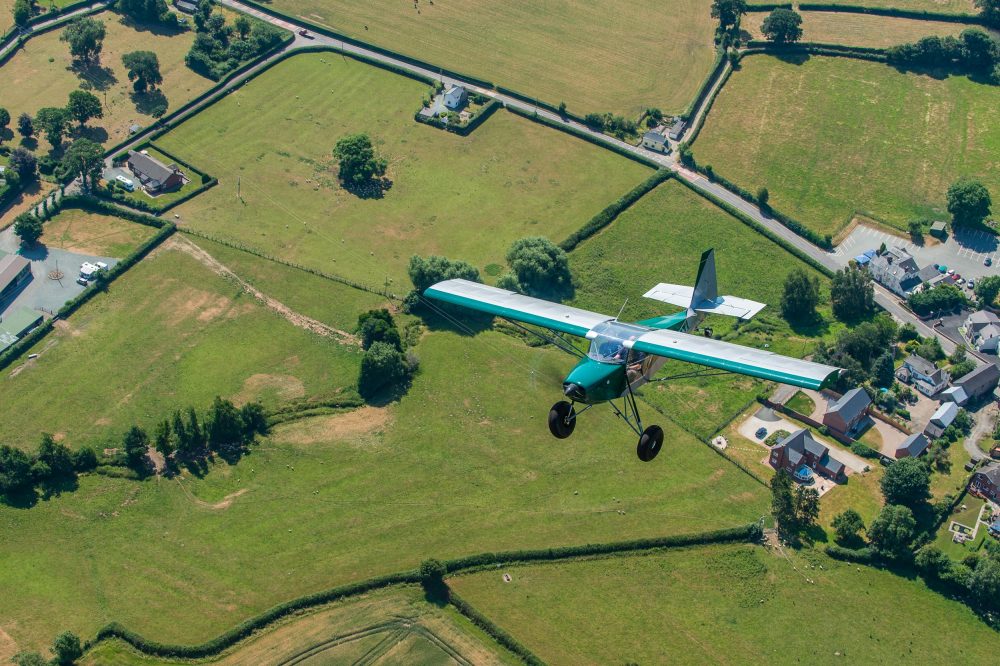
“It’s an aircraft which, in the right hands wins competitions with take-offs of around 77 feet and landings that are shorter than the length of a C172”
Even though it’s a relatively small, two-seat LSA, the SuperSTOL is pretty imposing, mainly thanks to its tall undercarriage and huge tyres. G-SSTL has a pair of 29in Airstreak Bushwheel tyres fitted to its diminutive-looking Matco wheels, and although they definitely add to the look of the aeroplane, they also bring some practical benefits.
In a traditional GA aircraft you have three elements, namely the wheel, the tyre and the inner tube. The tyre’s bead is seated on the wheel’s rim, and is inflated via a valve which protrudes through the wheel.
The Bushwheel is tubeless so there are just two parts, the wheel and the tyre. Rather than the valve pushing through the wheel, it’s moulded into the tyre’s sidewall. With this set-up, any movement of the tyre on the wheel’s rim, which is more likely at low tyre pressures, wouldn’t see the valve ripped out, so you won’t get stranded.
Typically, a bush tyre will run pressure of 6-12 psi, so they’re super-soft (think of a kid’s Space Hopper), play an essential role in the suspension and easily roll over rocks, stumps, holes and, rather unhelpfully, chocks. I’m told that they also make waterskiing in an aircraft much easier.
Of course, you don’t get something for nothing, and there are a couple of downsides to having such big shoes. The first is cost, as while a couple of ‘normal’ 21in tyres for the SuperSTOL might set you back $300 a pair, the 29in variety are closer to $3,000, and as the slick rubber compound is very soft, they wear out pretty quickly when used on hard runways.
The wheels and tyres sit at the end of some impressive-looking, long-travel 400psi gas struts, which are similar in layout to those on the Pilatus PC-6 Porter. Watch some online videos of the SuperSTOL in action and you’ll see that one landing technique is to drag the aeroplane in and then just cut the power so that it drops to the ground from a few feet, using the gas struts and tyres to absorb all of the energy, without being handed it all back in the form of an embarrassing bounce or three.
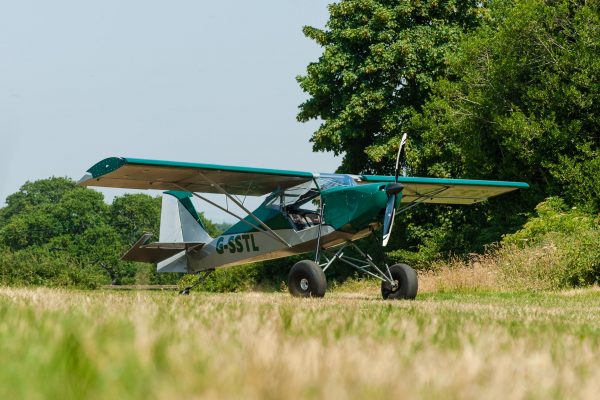
Plenty of lift
If the undercarriage and tyres are there to soak up the bumps, it’s obviously the wings which take care of the heavy lifting, and they’re some impressive devices.
Running all the way along the leading-edge are free-moving slats, which float in and out under aerodynamic load – there are two per side and they move forward and outboard when their time comes. If you’re familiar with the slats fitted to the legendary Helio Courier, these will be recognisable. Enormous Fowler flaps cover about two-thirds of the wingspan. On G-SSTL the ailerons are supplemented by optional spoilers, which are said to reduce adverse yaw and aid roll control in gusty conditions. They can be found on top of the wing, ahead of the ailerons and look a little like glider airbrakes, but obviously operate independently, with the ailerons.
If those wings aren’t complex enough for you, I should mention that they can be folded back for road transport or storage, without having to disconnect any controls. And should you be wondering about what amount of space the SuperSTOL needs when its wings are folded, the answer is something like 8ft 6in wide by just over 20ft in length.
The fuselage looks like it’s a bit short-coupled, and perhaps thanks to that and the ridiculously slow speeds at which you can fly, the tailplane and rudder are proportionally large control surfaces. This particular aircraft is powered by a 100hp Rotax 912 ULS, driving a two-bladed, fixed-pitch Catto prop. The cockpit is spacious, with adjustable seats and a large, no, make that a huge, baggage area to the rear, which is good for 70lb-worth of whatever. The doors are top-hinged and the instrument panel big enough for anything you’d want to install for a bit of VFR bush-flying fun.
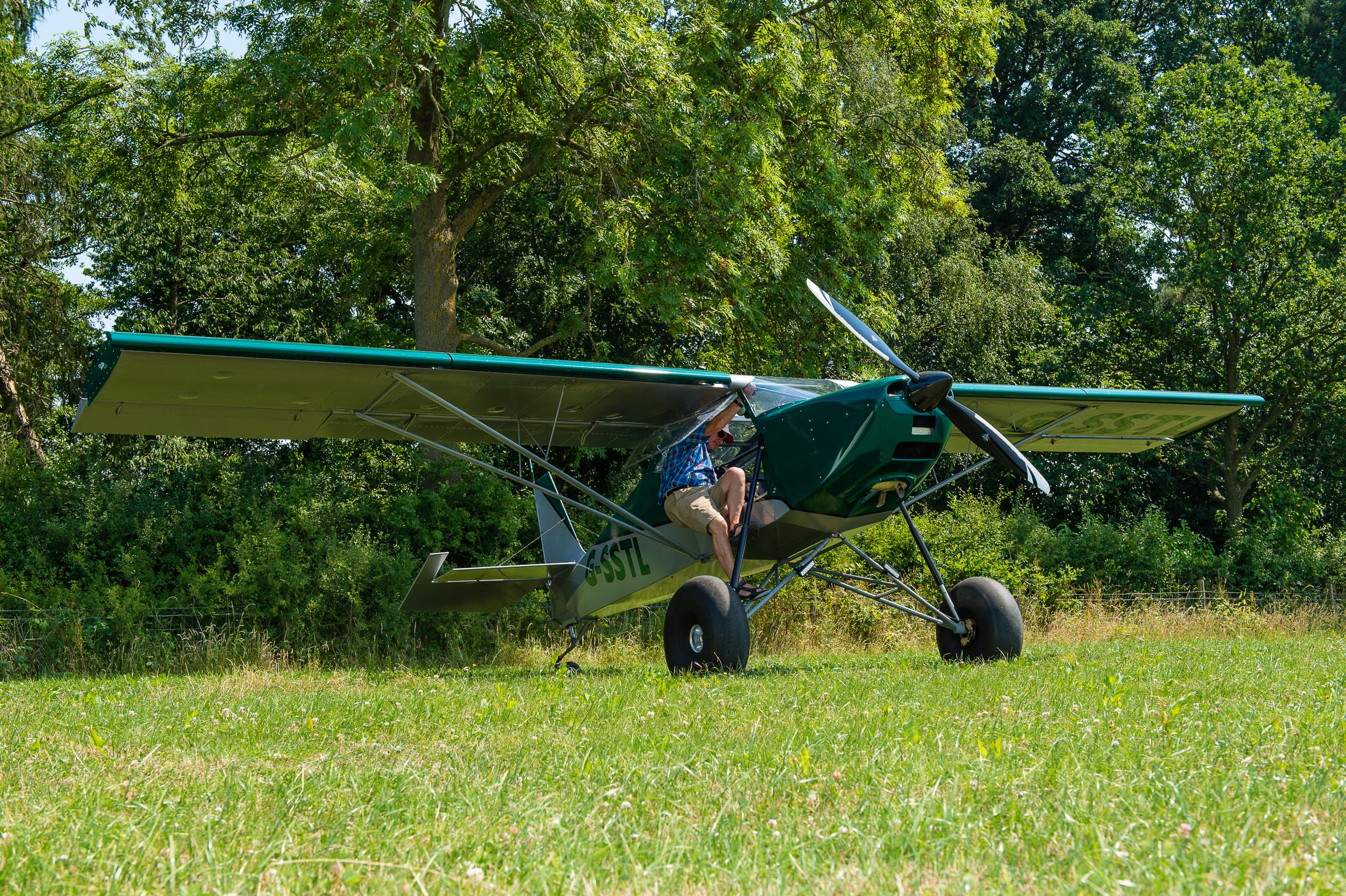
Getting in is simple, or at least it is if you aren’t me, but like most things I imagine that it gets easier with practice, which I’m basing on the fact that Bob Pooler hopped in with the elegance of a ballet dancer. Inside, you’ll find comfortable and adjustable seats, a couple of sticks, a central vernier throttle, the obligatory Rotax choke control, and rudder pedals with toe brakes. Between the seats, there’s a very long flap handle and a basic but functional trim lever, and forward of that there’s a tailwheel lock and an Andair fuel valve.
The panel in ’SSTL is very simple – there are two iPads, the one on the right running SkyDemon and the one on the left acting as a PFD, plus a backup altimeter and ASI, an engine monitor and a radio and transponder.

Bob very diplomatically pointed out that the STOL characteristics would be perhaps a little subdued, given that we’d be operating on a hot day at mauw. Before we flew together, he offered to demonstrate the aircraft solo, so that I could see what it was capable of at lighter weights. That suited me just fine, so Ed and I watched as Bob applied full-power, lifted the tail then raised the nose to what looked like a climb angle you might only match with a rocket, and seemed guaranteed to be followed by a stall and spin.
Happily, it wasn’t and the demonstration was repeated a few times so that Ed could take photos, with each departure followed by a less dramatic but perhaps even more impressive landing.
Fly the SuperSTOL with power on the back of the drag curve and it advances very slowly indeed, and with so little energy once the wheels are down that it’s stopped almost instantly, and this was on a day with very little wind!
Demos done, it was my turn to fly, and although I’m not particularly short I found the view ahead to be a bit limited, thanks to the deck angle when taxying. There are some slightly larger seat cushions in the pipeline and the cabin has plenty of headroom going spare to accommodate them. Until then, it’s a case of weaving along and, as the castering tailwheel isn’t steerable (it’s that big rudder and a bit of differential brake instead), being careful not to scrub off too much valuable bush tyre rubber on hard surfaces which, luckily, I wasn’t.
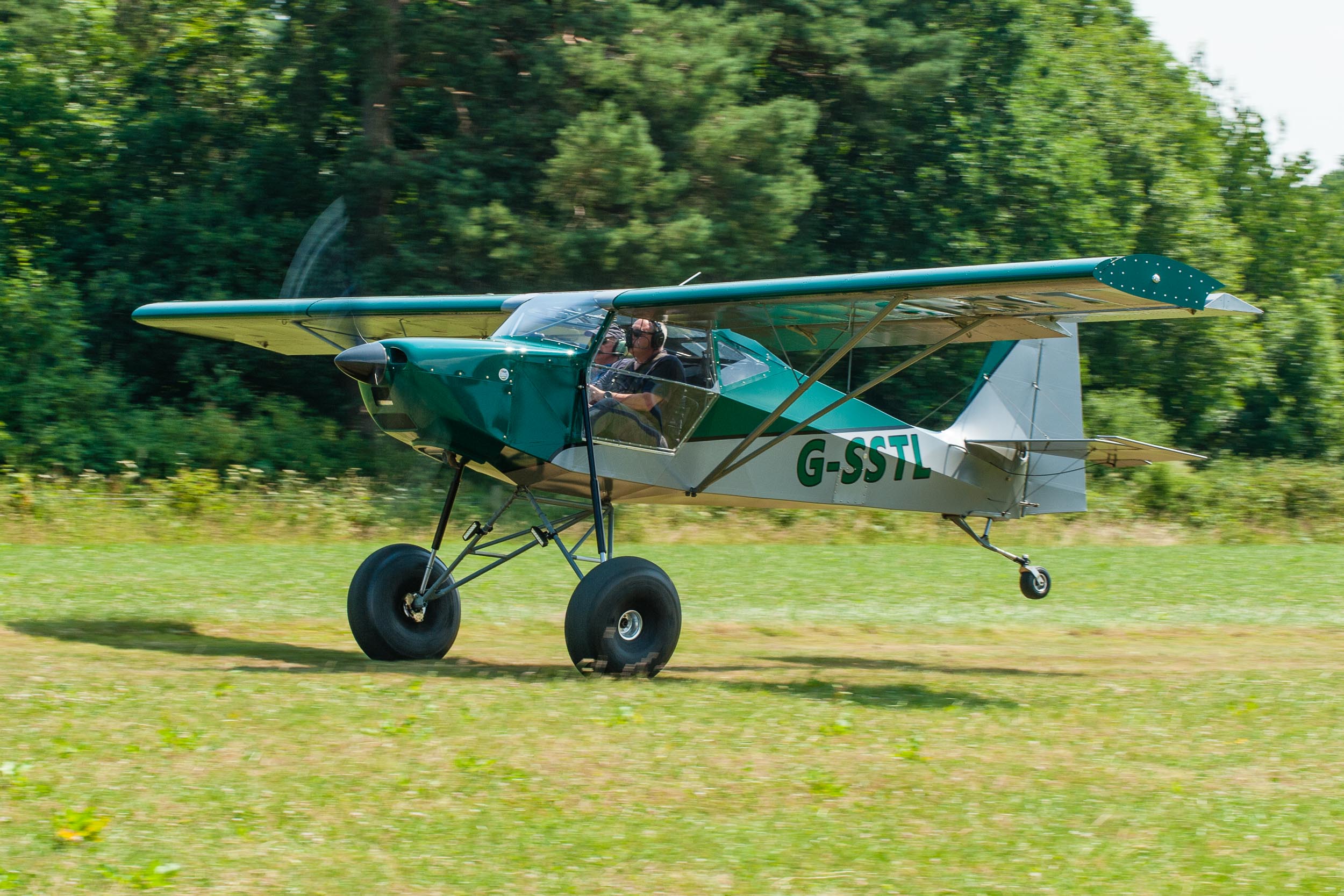
Take-off technique
There are various take-off techniques, with extreme versions which call for simultaneous application of flap and backward stick – how Bob had been flying – or even a levitation with full flap applied from the outset. However, none of them make sense for a first take-off on type, so we opted for the fairly standard technique of one stage of flap, stick-forward to raise the tail and then back to break ground at the appropriate time.
I didn’t raise the tail enough, and I allowed us to accelerate a bit more than was strictly necessary, but even with my very cautious flying we were still off the ground much sooner than I’d imagined. I’d like to say we climbed away at a constant 500fpm but we didn’t, partly because there wasn’t quite enough rearward trim available, but mainly due to the fact that I was struggling to calibrate the pitch angle and airspeed required with the mental picture which had been burnt into my brain from many hours flying ‘normal’ aircraft.
We eventually had enough height to look at the full-flap stall. Vfe, the max flap extension speed, is 75mph, and we were at about 70mph when I reached for it. The aerodynamic resistance on those huge flaps felt quite high, and although I could’ve hauled on the long flap lever, I was worried that I might bend it. The easy answer was to slow down, and the best way to do that is to raise the nose, again to an angle which takes some getting used to.
With flaps deployed and speed decreasing, there was suddenly a whoosh and tremor through the airframe, which was the leading-edge slats deploying – a pretty obvious sign that things are getting slow.
Eventually, the stick was full-back, the ASI reading 30-35mph and we were stalled. The wings were level the nose was bobbing up and down, so gently and serenely that you could almost forget you’ve got the mother of all descent rates going on. No matter how tough the undercarriage is, you don’t want to be hitting the ground at that rate so then it’s stick-forward and apply power to turn the descent into a climb.
In the circuit, speed control was straightforward, with a bit of care needed not to get too slow – the back of the drag curve may be the way to win competitions, but it’s bad form to be doing it on a mile-and-a-half final at 500ft or so.
I came over the ‘real’ hedge at about 65mph, slowed further, thought I was getting a little too much so and added a bit of power, which of course only served to move the touchdown point further into the strip, and there was plenty of it left.
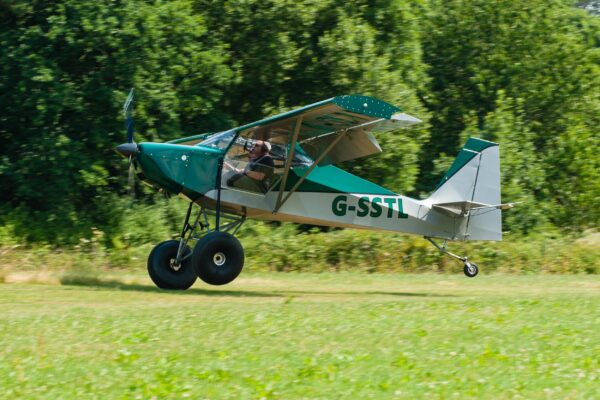
Mental adjustment required
The SuperSTOL is an aeroplane which forces you to mentally adjust your flying paradigms and without doing so you’ll be forever tugging a heavy flap lever, floating along the runway, bleeding excess energy, or failing to climb because Vx and Vy seem to want to put the nose way too far above the horizon.
In competent hands, it starts flying before you’d expect, keeps doing so when most types would fall out of the sky and stops in distances which are measured in tens rather than hundreds of metres. In skilled and current hands, the SuperSTOL is capable of doing all of that, but even slower and even shorter.
The flipside of the STOL coin is the cruise performance. If you don’t have too far to go, the 70kt relaxed cruise is just fine, but if you live on the south coast and dream of flying to the Orkneys at weekends, you probably won’t want to be making that trip on a regular basis!
The bottom line is that this aeroplane is about fun, adventure and exploration. It’ll open up hundreds of sites which just aren’t practical with most types. Those who are good at making friends will likely find all sorts of off-piste possibilities, from fields to farm tracks, and if they can find themselves a garden big enough, there’s a bit of aviation paradise just waiting for them…
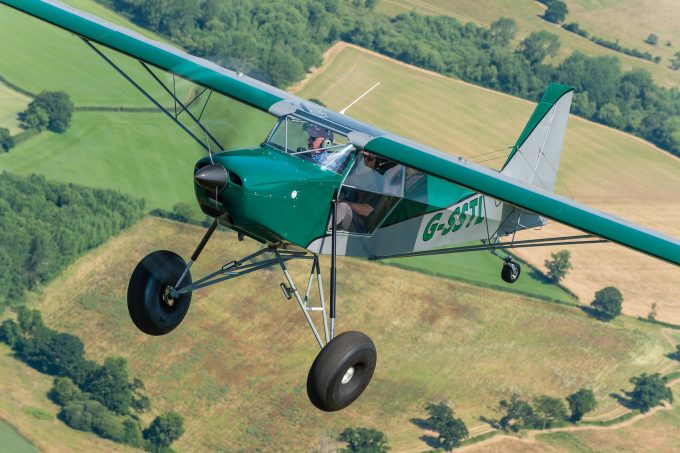
Want to build one?
On the face of it, the SuperSTOL should be relatively easy to build. The fuselage arrives in one piece, with all welding done, and although you can buy the bits to build the wings yourself, you can also purchase ’Stage 3’ versions, which arrive ready to cover, with the fabric and adhesive also being included in the kit. Although a kit is undoubtedly easier than building from plans, it does seem to demand a decent amount of time and effort. That said, having something which looks like an aeroplane from the moment when you take it out of the shipping crate must offer a significant psychological advantage.

Performance
Weights & loadings, manufacturer.
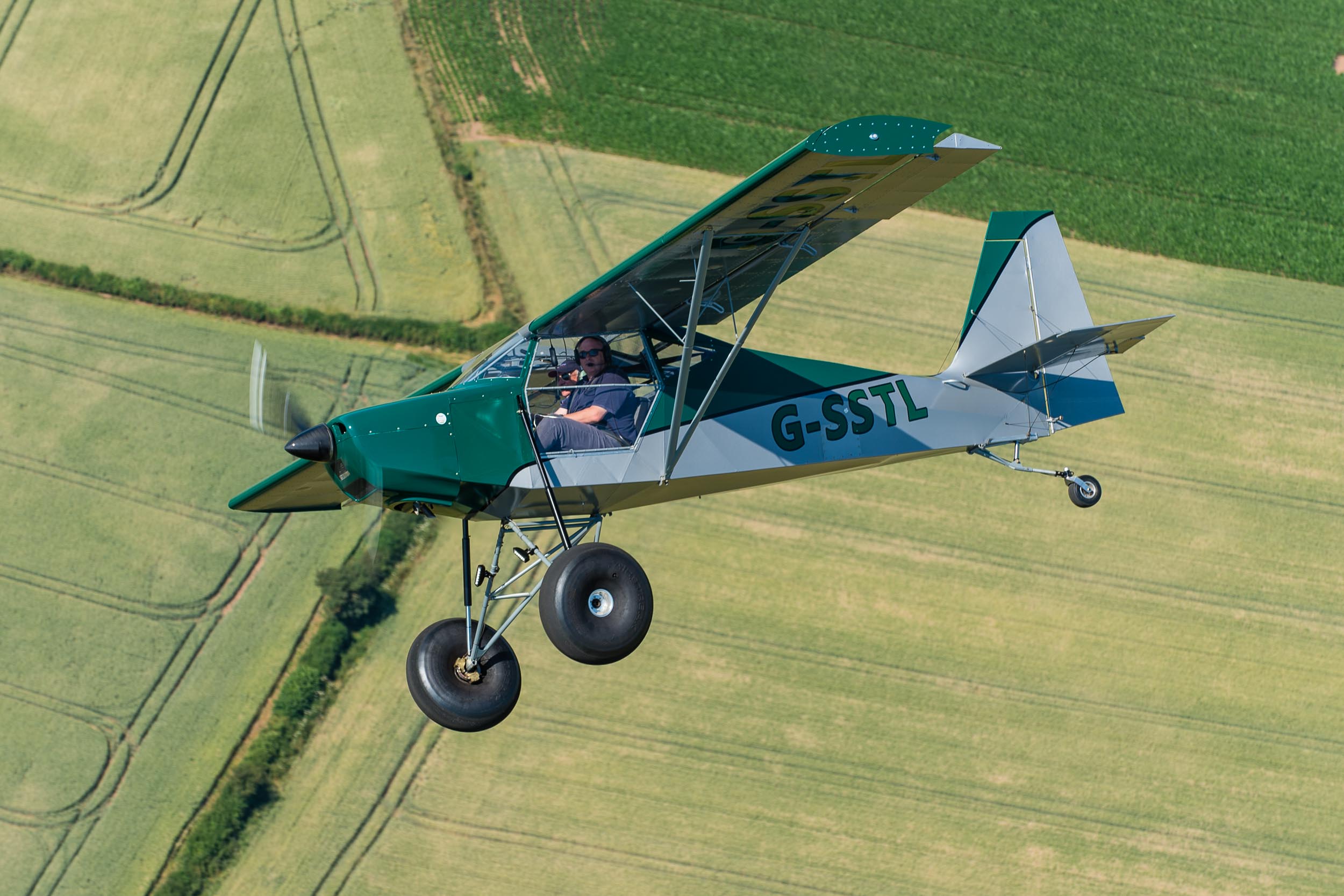
Leave a Reply Cancel reply
You must be logged in to post a comment.
Recommended
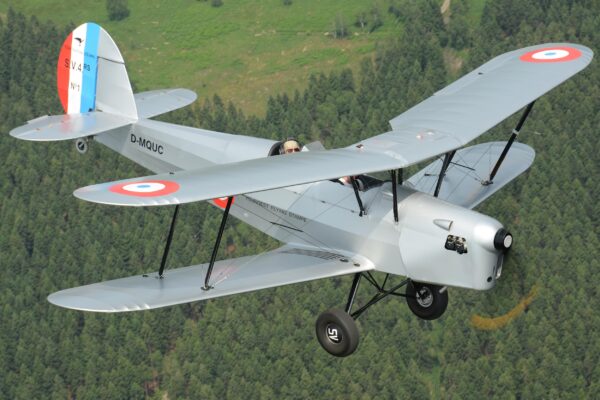
Stampe SV4-RS: aerobatic icon now a microlight
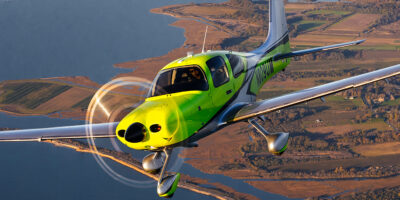
First flight in a £1m+ G7 Cirrus SR22
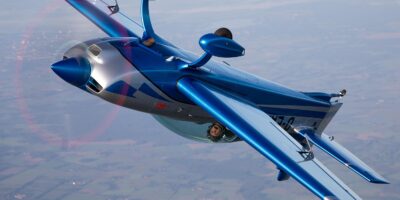
Extra NG: German aerobatic ace gets all-composite makeover
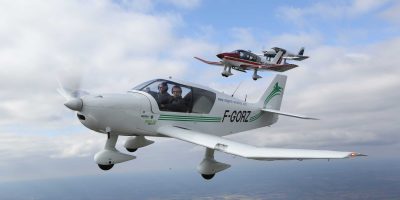
What's a Robin DR400 with a Rotax 912iS engine like to fly?
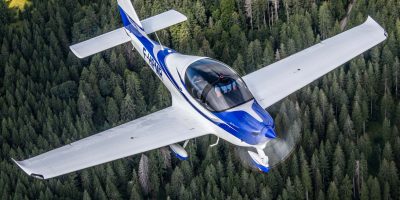
Train with the ‘Professor’ – Tecnam's P-Mentor
We use cookies to give you the best online experience. Please let us know if you agree to all of these cookies.
- Skip to primary navigation
- Skip to main content

General Aviation News
Because flying is cool
Just Aircraft offers Spoilers Kit for the SuperSTOL
By General Aviation News Staff · January 17, 2015 ·
Just Aircraft now provides optional instructions and materials for installing spoilers on new SuperSTOL kits.
The addition of spoilers enhances slow flight control, especially in undesirable wind conditions, according to officials with the Walhalla, S.C.-based company. They represent the latest step in advancing the short takeoff and landing capabilities of the SuperSTOL, officials add.

Troy Woodland, who designed and flight tested the spoilers, said: “Once a pilot discovers the advantage of spoilers in slow flight and turbulent air, he won’t want to fly without them. They go a long way toward taking the rock and roll out of rough air on final, and they open up a lot of new areas for landings.”
The kits, which connect the spoilers to the ailerons, take about 40 hours to install. They can be mounted at the factory for an additional charge.
Designed to deploy with the ailerons, the spoilers will rise on the right wing when the pilot moves the stick to the right. Since stick movements at cruise speed are minimal, the spoilers have little effect, but in slow speed operations, when the stick movements are greater, the spoilers will reach maximum deployment and effectiveness.

The SuperSTOL wing features slats that extend in slow flight, vortex generators, and fowler flaps all of which are designed to allow the aircraft to fly at a very high angle of attack without stalling. That in turn, allows a touchdown speed in the low 20s in calm conditions.
Optional spoiler kits, which are available only for the SuperSTOL, are priced at $1,000. With factory installation, the price is $2,500.
Share this story
- Share on Twitter Share on Twitter
- Share on Facebook Share on Facebook
- Share on LinkedIn Share on LinkedIn
- Share on Reddit Share on Reddit
- Share via Email Share via Email
Join 110,000 readers each month and get the latest news and entertainment from the world of general aviation direct to your inbox, daily. Sign up here .
Curious to know what fellow pilots think on random stories on the General Aviation News website? Click on our Recent Comments page to find out. Read our Comment Policy here .
Israel’s air defense caught off guard by Hezbollah’s low-tech drones
As Hezbollah aircraft hit military sites and homes, they are resurfacing debates over Israel’s decade-old air defense system, which many worry provides an imperfect shield.

TEL AVIV — For years, the standoff on Israel’s border was between the massive rocket stockpile of the Iranian-backed Hezbollah group and the vaunted Iron Dome antimissile system that ably handled most incoming rockets and artillery.
But Hezbollah is deploying a deceptively simpler weapon from its arsenal to bypass this cornerstone of Israel’s national security strategy: high-speed, low-flying drones — many just commercial-grade — to gather intelligence and drop explosives.
As these uncrewed aircraft hit military sites and private homes in Israel, they are also resurfacing debates around the decade-old air defense system, which many worry provides an imperfect shield against Israel’s various enemies — especially as they experiment with new weapons and new ways of using old ones.
With the imminent prospect of a regionwide war exploding with Hezbollah and its allies, Israel is scrambling to reformulate its air defense approach to deal with these new, lower-tech threats.
Israel received a shock Tuesday when Hezbollah released drone footage of a critical Israeli military base at the port of Haifa, some 15 miles from the Lebanese border, thus showing off its drone abilities. Hezbollah said the images were captured with a drone that went undetected and returned to Lebanon.
GET CAUGHT UP Stories to keep you informed

Convicted serial rapist linked to Shenandoah park murders, FBI says

U.S. bans sales of Kaspersky anti-virus software, citing ties to Russia

Trump pledges green cards for college grads, reviving a Hillary Clinton idea

Donald Sutherland, ‘shape-shifty’ movie stalwart, dies at 88

Too broke to join a wedding party? You can say no.
“What we released yesterday is a small part of many hours that were filmed in Haifa,” Hezbollah leader Hasan Nasrallah said in a speech Wednesday. “There will be no place safe from our missiles and drones.”
Hezbollah has released footage from one of its drones showing the Haifa area, including the city of Haifa, the port, residential and military complexes, military infrastructure, and the harbor pic.twitter.com/GOY06zZxqf — Ali Hashem علي هاشم (@alihashem_tv) June 18, 2024
Lt. Gen. Herzi Halevi, the Israel Defense Forces chief of staff, said the footage showed a “capability that we are aware of.”
“We are preparing and building solutions for those capabilities and for other capabilities that will meet them at the necessary moment,” he said Wednesday from an Iron Dome battery in northern Israel.
Soon after the footage was made public, the Israeli army said it had “approved operational plans for an offensive in Lebanon.”
U.S. special envoy Amos Hochstein, after shuttling between Israel and Lebanon, said in Beirut on Tuesday that the region was “going through dangerous times and critical moments,” and urged a diplomatic solution.
Israel and Hezbollah both say they do not want war, but they are readying for one. For Israel, that means rethinking old ideas on the advantages — and limits — of its own technological superiority.
Hezbollah drone tactics involving agile, radar-evading drones for reconnaissance and bombing are not new, but they have surfaced into the public conversation in recent weeks, as the tit-for-tat cross-border attacks have reached a greater intensity.
Hezbollah’s small, remote-controlled drones — believed to be simply bought over the counter — can operate independent of radio signals. Some can fly up to 125 mph. They can fly low to the ground, and can maneuver around the mountains and into the canyons along the border, skimming through the blind spots in Israel’s detection web.
The Israeli military may mistake the drones for its own, or for birds. Even when it does identify them, the drones do not follow the straight path of a missile, and shooting one down, in the case of a reconnaissance drone, may cause more damage than simply letting it return to its control center.
Onn Fenig, the CEO of R2, an Israeli signal processing and machine learning start-up, said that the war between Ukraine and Russia, in which both sides are heavily relying on drones , and now increasingly between Israel and Hezbollah, showcases the “modern battlefield, in which threats have evolved beyond the visible spectrum.”
In the case of the war in Ukraine, both sides use drones, but neither has found an effective defense against them, contributing to the battlefield stalemate. It is not clear how Israel plans to crack the drone conundrum.
“The Hezbollah modus operandi is first sending out very small commercial drones to do surveillance of IDF military posts, trying to figure out which units are there. Then a few seconds later, a kamikaze UAV explodes,” Fenig said, using the abbreviation for unmanned aerial vehicles.
“The damage is normally not that big — it’s not a missile. But it’s psychological — they are showing that they can penetrate the air defense, they can reach very far behind your border lines,” he said, speaking from the international arms expo in Paris.
The drone footage from the Haifa port on Tuesday was probably only the latest in a string of similar cases, Fenig said, made public only because “people actually saw it in the sky,” and because Hezbollah publicized it as a piece of psychological warfare.
The simplicity of drones is the reason that, for more than a decade, they were seen as a low priority for an Israeli army that prided itself on its advanced tech, said Liran Antebi, a researcher on the link between technology and defense at the Institute for National Security Studies, a nonpartisan think tank in Tel Aviv.
Israel is now part of an arms race where, for a change, organizations that once seemed small or only paramilitary can be surprisingly effective, she said. “Many times, Israel’s enemies challenge it with low-tech, or no tech, and so Israel must not necessarily respond only with technology, but with a real awareness of the threat.”
During the Oct. 7 Hamas-led attack, thousands of gunmen stormed Israel’s border with the help of explosive-laden drones that took out the surveillance cameras , sensors and automatic machine guns along Israel’s southern border fence — a barrier thought to be impenetrable.
More than 1,200 Israelis were killed in that attack and about 250 taken hostage. In the ensuing eight months, more than 37,000 Gazans have been killed during Israel’s retaliatory air and ground assault, according to the Gaza Health Ministry, which does not distinguish between combatants and civilians but says the majority of the casualties are women and children.
A war with Lebanon could be even deadlier for both Israel and Lebanon, given the number and types of weapons involved, experts say.
Last week, after Israel killed the most senior Hezbollah commander yet, the group fired its largest salvo of rockets and drones at Israel since October, sparking wildfires that have scorched 11,000 acres of land. On Saturday, Hezbollah shot antitank missiles at the IDF’s main air traffic control base on Mount Meron. Two days later, Israel killed a “key operative” in a Hezbollah rockets and missiles unit. The cross-border attacks are incessant.
The biggest test for Israel’s air defense, however, came after Iran retaliated for the bombing in April of its embassy in Damascus, Syria, and the killing of two senior Revolutionary Guard commanders . Iran, together with regional allies, fired hundreds of cruise and ballistic missiles and launched hundreds of explosive drones at Israel.
Israel emerged largely unscathed, with just one young girl severely injured by shrapnel. But it had help. A U.S.-led regional coalition provided major support in shooting down many of the incoming projectiles.
The Iranian attack was also a one-off event, and raised questions around Israel’s ability to handle, or afford, an attack that would have been more sustained, said Fenig, the Israeli start-up CEO. He said that in the post-Oct. 7 world, Israel and its allies would need to leverage its military technology to deal with a new generation of unconventional and at times paradoxical threats.
“If you’re strong and you have budget, you don’t have the upper hand,” he said. “There’s no one solution in this dramatically changing battlefield. It’s all very problematic.”
Israel-Gaza war
The Israel-Gaza war has gone on for months , and tensions have spilled into the surrounding Middle East region .
The war: On Oct. 7, Hamas militants launched an unprecedented cross-border attack on Israel that included the taking of civilian hostages at a music festival . (See photos and videos of how the deadly assault unfolded ). Israel declared war on Hamas in response, launching a ground invasion that fueled the biggest displacement in the region since Israel’s creation in 1948 .
Gaza crisis: In the Gaza Strip, Israel has waged one of this century’s most destructive wars , killing tens of thousands and plunging at least half of the population into “ famine-like conditions. ” For months, Israel has resisted pressure from Western allies to allow more humanitarian aid into the enclave .
U.S. involvement: Despite tensions between Israeli Prime Minister Benjamin Netanyahu and some U.S. politicians , including President Biden, the United States supports Israel with weapons , funds aid packages , and has vetoed or abstained from the United Nations’ cease-fire resolutions.
History: The roots of the Israeli-Palestinian conflict and mistrust are deep and complex, predating the establishment of the state of Israel in 1948 . Read more on the history of the Gaza Strip .


We Fly: Just Aircraft SuperSTOL
Stephen pope.

** Just Aircraft SuperSTOL (Photo by Stephen Pope) ** .
Work crews finished hauling away the largest of the rocks and muddy stumps only a few days ago, turning what had been a leafy hill behind the Just Aircraft factory in tiny Walhalla, South Carolina, into a rutted, scarred clearing barely the size of a football field. Even my host, company co-founder Troy Woodland, doesn't condescend to calling this a runway. He banks steeply, turning short final in his lime-green and silver SuperSTOL kitplane, diving for the red-hued earth with what suddenly seems like questionable sanity.
"If this doesn't make you a little nervous your first time out," Woodland tells me over the intercom, "there's probably something wrong with you."
I'm not ashamed to admit it: I'm slightly nervous as the ground begins to rush all around us.
"But really," he says, "you shouldn't be nervous."
He pours in a burst of power and smoothly pulls back on the stick. The SuperSTOL rises to follow the contour of the hill until Woodland abruptly chops the power. The world goes eerily quiet as the SuperSTOL announces it is finished flying — from a height of several feet and at a discomfortingly fast rate of descent we are falling. I brace for impact, but there is no bone-crushing arrival. Instead, the SuperSTOL's nitrogen-charged shock absorbers and 29-inch tundra tires cushion the brunt of the abuse from our unorthodox landing. Woodland immediately gets on the brakes, glancing at me as we trundle over rocks and tree branches.
I am sitting in the left seat, grinning like an idiot.
This basic sequence is repeated perhaps two dozen times throughout the day as we drop into impossibly small parcels of land in and around Walhalla. Once firmly planted on the ground, Woodland wastes no time in putting his foot into the rudder to spin us back toward whence we'd come, applying full power and with effortless motions jabbing the stick forward for a brief instant and then wrenching it back while grasping the flap handle on the floor and raising it one notch. The combination of sudden forward momentum and additional lift from the flaps propels us into the air. We climb sharply. The airspeed indicator shows 35 miles per hour. The sensation is similar to being in a helicopter.
No other airplane I've flown can do what the SuperSTOL can. STOL, as you know, stands for "short takeoff and landing." SuperSTOL, then, implies really short takeoffs and landings, made possible by the airplane's huge 45-degree fowler flaps and self-deploying leading-edge slats, designs borrowed from the Helio Courier bush plane and scaled to fit this diminutive two-seat experimental amateur-built kitplane. The only vehicle I would confidently take on the mess of a surface we first landed on would be a farm tractor or a backhoe, I think to myself. Yet here we are in a rag-and-tube taildragger, lumbering over deep grooves, muddy furrows and jagged rocks as though it's all perfectly normal.
Somehow, in this airplane, it is normal. By the end of the day I feel comfortable with everything we are doing. The nervousness has faded — and the reason is simple. The SuperSTOL lands at such slow speeds and has such a sturdy structure that, with each takeoff and landing, my confidence in the airplane's incredible capabilities grows. What would have seemed unusual, in fact, would have been landing on an actual paved runway. Instead, Woodland and I drop into farm pastures, neighbors' yards and steeply graded grass and mud fields bordered by trees, lakes and rivers underneath a 2,000-foot overcast lording over the smoky foothills of the Appalachians. What a way to spend a day.
Birth of the SuperSTOL
What's truly amazing about this kitplane is that, if you have a few hundred feet of space in your yard and an extra $75,000 on hand, you too can own this incredible airplane.
The world got its first glimpse of Just Aircraft's SuperSTOL at Oshkosh in 2012, where it was an instant hit when Woodland and his business partner, Gary Schmitt, demonstrated the airplane in public for the first time. The SuperSTOL had actually been on the drawing board for close to 10 years. Woodland knew it was only a matter of time before he would build it. Just Aircraft had been selling a kitplane called the Highlander that offered many of the attributes Woodland saw as desirable for a personal bush plane, such as light weight, decent power, slow landing speed and available tundra tires. But to create the ultimate budget bush plane, changes were needed — radical changes.
The first modification Woodland designed for the SuperSTOL was its unique A-frame landing gear, a setup borrowed from the Pilatus Porter and further modified to incorporate shocks similar to those found on off-road trucks and ATVs. Next Woodland whipped up the engineering drawings for the SuperSTOL's slats, which are designed to extend automatically any time the airspeed drops below 55 knots. As on other slat-equipped airplanes, they allow the wing to continue flying at a higher angle of attack and, in turn, a slower airspeed. In normal operations, Woodland says, the SuperSTOL's tail actually stalls before the wing does — and it happens at an indicated airspeed of just 28 knots.
Woodland says he's tried to get the airplane to spin but hasn't succeeded yet. For the wing to stall, the SuperSTOL has to be at such a wild nose-up deck angle that he doesn't try that very often either. The normal procedure for landing is to chop the power, hold the stick full aft and let the airplane drop, at 500 to 1,000 feet per minute, all the way to impact with the ground. There is no flare. There is no float. It's the sort of abuse that would break most other airplanes. For the SuperSTOL, it's routine.
Another key piece of the development effort was convincing Sensenich to develop a new 82-inch climb prop to pair with the SuperSTOL's Rotax 912ULS engine. Woodland's personal airplane, a self-described test mule, has a Kiev climb prop built in Ukraine and a big-bore kit for the engine that bumps horsepower from 100 to 110. The combination allowed us to get off the ground in about 100 feet on the shortest runs, though Woodland says he generally likes to use every foot of available takeoff space before hauling the SuperSTOL into the air. Some early SuperSTOL kit builders have opted for much larger engines, up to 200 horsepower, which should provide mind-blowing short-field performance, especially with the new Sensenich prop.
Even a SuperSTOL with the stock Rotax 912ULS engine has a published takeoff ground roll of just 275 feet at the airplane's max gross weight of 1,320 pounds, the typical limit for LSAs. Another thoughtful design element is the airplane's folding wing, which allows easy storage in a garage or shed. With the wings folded back, the SuperSTOL measures 21 feet, 8 inches long and just 8 feet, 6 inches wide. Landing ground roll is about 100 feet with help from the SuperSTOL's big Matco disc brakes, meaning this truly can be a backyard airplane for a good number of people.
Still, it's not the ideal choice for long-haul travel — or even medium-haul travel. Typical cruise speed with those big tires hanging in the breeze is a leisurely 87 knots. But with its 24-gallon gas tank and the Rotax's economical fuel burn, endurance is exceptional. And in the air the SuperSTOL feels like a lot of LSAs we've flown. The controls demand a light touch, especially the ailerons. To keep the ball centered, it's best to lead turns with the rudder, applying almost imperceptible input in the direction of the turn with the stick. I noted the airplane we flew rode a little nose-high in cruise, something Woodland said he's working to tweak through adjustment of the horizontal stabilizer's angle of incidence.
Carolina Bush Flying
Where the SuperSTOL shines brightest, of course, is during takeoff and landing. My introduction to the airplane came at Sun 'n Fun in Lakeland, Florida, this past spring. Woodland and I flew a customer's airplane from Paradise City, the small grass runway reserved for ultralights, LSAs and small helicopters. We couldn't leave the area due to a TFR blanketing the airport during the afternoon airshow, so we were stuck in the pattern, where the breezy crosswind had swung around to become a 10-knot tailwind. Even so, Woodland had the SuperSTOL down and stopped in about 100 feet. Even though the conditions weren't ideal, the airplane intrigued me. I agreed to come to Walhalla for some real bush flying.
When I showed up at his door a couple of weeks later, Woodland delivered on his promise to show off the SuperSTOL's unrivaled capabilities in its true elements. After we'd made several takeoffs and landings on the newly cleared strip behind the factory and on another grass runway running from a lake in a ravine to the top of the hill in front of the one-story concrete-block factory, we headed for the Tugaloo River on the border with Georgia, the site of our next improbable landing.
"I'd like to drop in and say hello to a friend," Woodland said, setting up for final toward another hill with a thin cutout in the trees, atop which sat a white plantation-style mansion. The handsome home had black shutters and a grand entryway flanked by four tall columns. As we slowed for final, the slats deployed with a subtle clunk — it wasn't really jarring, but no matter how many times it happened throughout the day, it was always a surprise to me.
Descending below the tree line, Woodland pulled the power and eased the stick back. The SuperSTOL dropped onto the lawn and rolled to a stop in the shadow of two enormous oak trees. He shut the engine down and we climbed out to greet the home's owner, Chip Angel, who offered us handshakes and fresh-brewed coffee. As we chatted and began looking over the airplane, Troy and I noticed that we'd been flying around with a 5-foot-long tree branch entwined in the tailwheel. From the reddish color of the dried mud there was no doubt that we'd picked it up on a previous landing back at the Just Aircraft factory. Woodland gave the branch a good tug and tossed it aside — to the delight of Angel's golden retriever, who joyfully snatched it with his teeth and bounded up onto the porch.
With the offending stick removed and our coffee cups emptied, we bid farewell to our host and climbed aboard the airplane, rocketing back into the sky and banking sharply for home. After several more takeoffs and landings on the muddy hill, we shut down and headed inside the 32,000-square-foot factory for a closer look at the Just Aircraft operation. It was a surprisingly busy place, with dozens of workers and customers cranking wrenches.
Woodland and Schmitt founded Just Aircraft in 2002, starting out with a kitplane called the Escapade that's reminiscent of a Kitfox. That airplane evolved into the Highlander, which quickly earned a reputation as a decent STOL performer. Still, Woodland knew that he and Schmitt could do better. Working from a pile of engineering drawings at home on his kitchen table, he started with the basic pre-welded steel frame from the Highlander and began incorporating all the touches that turned a fine STOL airplane into a SuperSTOL. The prototype was completed just days before the start of Oshkosh 2012.
After seeing the airplane in action, would-be customers began lining up asking when they could buy one. That set into motion plans for full-scale production of a kit, demand for which is exploding. Woodland said nearly 100 SuperSTOL kits have been shipped so far, and production is nearly sold out for the rest of this year. About 90 percent of all new orders are for the SuperSTOL versus the Highlander, Woodland said, despite the Highlander's lower price.
Building the SuperSTOL
Only a handful of SuperSTOLs have been completed so far, but more are taking to the sky all the time. Build times are expected to average between 500 and 1,000 hours, which is typical of several other homebuilt models. The basic kit costs $36,650 and includes everything from the firewall back, save for the cockpit instruments. The base engine, prop and cowl add $27,000 to the total price, while the instrument panel can set a builder back anywhere from $5,000 to perhaps $15,000. To save money, Woodland said he pieced together his lime-green SuperSTOL using a rebuilt engine and used tires.
As for the true performance of the airplane, early SuperSTOL pilots are still in test-pilot territory. Woodland said it took him hours of flying the airplane with the flaps and slats extended before he truly began to appreciate just what the SuperSTOL can do in the air. With around 800 hours under his belt, he has a pretty good feel for its capabilities. Still, he said Just Aircraft plans to hire an independent flight-test company soon to really wring out the airplane and define the full performance envelope.
One thing is for certain: The SuperSTOL couldn't achieve its performance goals without the clever technology Woodland has incorporated into the design, especially the slat design. What was a little unnerving about the slats to me is that they often deploy asymmetrically, with only one slat popping out initially followed a moment later by the other. It doesn't really affect controllability, however, and when the slats are deployed for landing they stay out. Unlike the design of the Helio Courier, which has slats that slide out on tubes, the SuperSTOL's slats pop in and out on short arms that fold flush against the wing at higher airspeeds. It's an ingeniously simple setup that saves on weight, cost and complexity.
The SuperSTOL's shock absorbers, meanwhile, are built in California by a company called Fox Factory Inc., a name well known to ATV and off-road enthusiasts. Woodland says the shocks, with 6 inches of suspension travel, were carefully tuned through trial and error to dampen them and allow for drop-in landings. The design works perfectly, with no chance of a bounced landing and little danger of a nose-over even with maximum braking. Proper transition training, of course, is an absolute must for pilots new to the SuperSTOL.
Visibility from the cockpit is superb, with all-Plexiglas doors and even a Plexiglas ceiling that lets in lots of natural light. The interior is roomy for an LSA, with plenty of elbow room and a large baggage area just behind the seats. Woodland said there's no worrying about how much weight is loaded into the rear cargo area (as long as you stay under max gross, of course) and that the airplane flies better with some weight in the back.

The Verdict**
As I toured the factory, finishing touches were being put on the first of two SuperSTOLs preparing to compete this year at the Valdez STOL competition in Alaska. While the SuperSTOL wasn't intentionally designed for Valdez, it may as well have been. I wouldn't be surprised if in the future this airplane dominates the competition there — especially as Just Aircraft and clever builders incorporate further enhancements and refinements into the design.
The SuperSTOL isn't for every pilot, but if what you crave is a go-anywhere bush plane that's built like a tank — and you have the patience and mechanical aptitude to build your own airplane — there's probably no better choice. The price is reasonable compared with most production LSAs, and there's not another airplane out there that can do what the SuperSTOL can. Woodland said he likes to think of it as an aerial ATV. And really, that's the perfect description. You can fly a SuperSTOL from your yard and head off on excursions and adventures that will introduce you to a side of aviation unlike what most other pilots will ever get to experience. Best of all, you'll be having so much fun you won't be able to wipe the grin off your face.
View our SuperSTOL photo gallery here. Or watch the bush plane in action in the video below.
We welcome your comments on flyingmag.com. In order to maintain a respectful environment, we ask that all comments be on-topic, respectful and spam-free. All comments made here are public and may be republished by Flying.

Your email address will not be published. Required fields are marked *
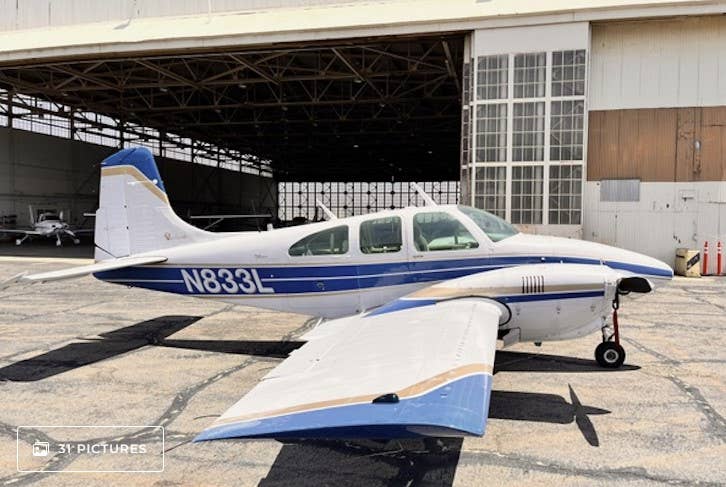
Subscribe to Our Newsletter
Get the latest FLYING stories delivered directly to your inbox
Subscribe to our newsletter

VIDEO
COMMENTS
STOL: The SuperSTOL is is Just Aircraft's short takeoff and landing version of the Highlander. LANDING GEAR: The SuperSTOL's upgraded design features a virtually indestructible landing gear that can accommodate 29-in tundra tires. SLATTED WING: "The new slatted wing has significantly enhanced the performance numbers and slow flight control.
The Just SuperSTOL is an American STOL amateur-built aircraft, ... SuperSTOL XL Just Aircraft introduced the Stretch XL, a stretched version in 2015. ... Cruise speed: 100 mph (161 km/h, 87 kn) Stall speed: 32-37 mph (52-59 km/h, 28-32 kn) Never exceed speed: 120 mph (193 km/h, 104 kn)
Just Aircraft LLC. STOL Aircraft Kits, Manufactured in USA. Models: Escapade, Highlander, SuperStol, and SuperStol XL. Menu Just Aircraft Models. Escapade. Specifications; Accessories and Options; Escapade / Highlander Pricing; ... cruise 110 mph 105 mph 100 mph. 1 00mph stall flaps 40 36 mph 36 mph 32 mph 32 mph take off roll
With its cowling not yet painted, the SuperSTOL XL is put through flight-testing to determine its performance capabilities. One of the most obvious upgrades is the option of more power. Piper's initial Cub began life with an underwhelming 37 hp. This was upgraded to 40, then 65, then 85, 95, 105, 115, 125, 135 and eventually 150 hp.
The SuperStol A wing unlike any other. The SuperSTOL is the third product from Just Aircraft. The SuperSTOL sports an all metal wing aerodynamically designed to enhance slow flight capabilities while also increasing cruise speed. Additionally the wing incorporates self-deploying leading edge slats and long span fowler flaps to further improve the aircraft's stall range. To complement the new ...
Cruise speed with the big, 29-inch Airstreak tires is around 90 mph. With smaller tires and the prop reset for cruise pitch, a cruise speed of 105 mph or so should be possible. Just Aircraft installs vortex generators to the underside of the horizontal stabilizer for greater elevator authority at low speeds.
In talking with the Just guys, it seemed that maybe the Highlander was a good option for me. It had good enough STOL capabilities to operate from my 1200 feet easily, but it retained some cruise speed over the tricked out SuperSTOL. Kind of the in between aircraft, not all STOL, not all Cessna 170. This was my plan for a while, a Highlander.
The normal procedure for landing is to chop the power, hold the stick full aft and let the airplane drop, at 500 to 1,000 feet per minute, all the way to impact with the ground. There is no flare ...
That best describes Just Aircraft's SuperSTOL Stretch XL. The red high-wing, ... Cruise speed: 90-95 kts/105mph with 29 inch Alaskan Bushwheels and Catto propeller Stall, power off, no flaps: less than 35 mph Takeoff distance, at 1,320 gross: less than 100 ft
SuperSTOL XL. By Plane and Pilot Updated February 22, 2016 Save Article. Just Aircraft SuperSTOL XL. ... Cruise speed (mph-75%): 102: Best rate of climb, SL (fpm): 3000: Stall (V so —mph): 37: ... America's owner-flown aircraft enthusiasts and active-pilot resource, delivered to your inbox! Email. Subscribe; Contact; About Us;
You want speed beyond the LSA limits, look towards Vans Aircraft; just don't expect comparable STOL performance. A side by side seating tailwheel Vans RV7 with IO360 has a top speed of 217mph, 75% cruise at 207, and with one person aboard can take off in 250ft and land in 350.
With the extra two and a half feet, the SuperSTOL Stretch XL is now 21 feet 6 inches long. Its rate of climb with the UL 520 is 3,000 fpm. It cruises at 95 knots, and its landing speed, thanks to ...
The added length makes the SuperSTOL Stretch XL 21 feet 6 inches long. Its rate of climb with the UL 520 is 3,000 fpm, and it will cruise 109 mph at 2,600 rpm with a landing speed in the low 30s. Just Aircraft plans to introduce the SuperSTOL Stretch XL at Sun 'n Fun, April 20-26. For more information about the XL visit JustAircraft.com.
The landing procedure in Just Aircraft's new SuperSTOL seems nothing short of suicidal. On final approach at 500 feet agl, chop engine power to idle and hold the control stick full aft. Then just sit there. Leading edge slats on the wings deploy automatically at 55 KIAS, and the airplane slows to 40 KIAS while the rate of descent increases to ...
With the new wing configuration, the Highlander will cruise at 110 mph, land at 32 mph and take off or land in 150 feet. The improved landing gear, which features long strut airshocks, can handle aggressive landings at off airport sites. ... All existing Highlanders can be retrofitted with the new folding SuperStol wing. Just Aircraft Company ...
The SuperSTOL was designed for back country flying and weekend adventures and Titan adds a new dimension to those adventures. The XL is sold as a complete kit for homebuilders. The SuperSTOL XL sports an all metal wing aerodynamically designed to enhance slow flight capabilities while also increasing cruise speed.
The SuperSTOL is the latest product from Just Aircraft. The SuperSTOL sports an all metal wing aerodynamically designed to enhance slow flight capabilities while also increasing cruise speed. Additionally the wing incorporates self-deploying leading edge slats and long span fowler flaps to further improve the aircraft's stall range.
Just Aircraft, the South Carolina-based company behind the SuperSTOL, designed it to sit in the USA's Light Sport Aircraft (LSA) category, so that means a maximum weight of 1,320lb (600kg) a clean stall speed of 45kt or less and a maximum speed of 120kt. The SuperSTOL is Just's development of the Highlander, which followed the Escapade, an ...
Find 2016 JUST AIRCRAFT SUPERSTOL with serial number on Aircraft.com. View photos, ownership, registration history, and more. Aircraft.com is the leading registry for planes, jets, and helicopters ... • Propellers: 2-bladed Catto, 0 ft 82 in (2.08 m) diameter • Cruising speed: 100 mph; 161 km/h (87 kn) • Stall speed: 32-37 mph; 52-59 ...
Just Aircraft offers Spoilers Kit for the SuperSTOL. ... Since stick movements at cruise speed are minimal, the spoilers have little effect, but in slow speed operations, when the stick movements are greater, the spoilers will reach maximum deployment and effectiveness. ... which are available only for the SuperSTOL, are priced at $1,000. With ...
That's fast—cruise speed for helicopters is usually in the 150 knot range (173 mph). The goal is for Racer to eventually cruise at 220 knots (253 mph). ... its wings give the aircraft lift ...
Kitplanes got in a couple of quick flights in the new Just Aircraft SuperSTOL XL - a stretched SuperSTOL with a 180 HP UL Power engine - before raindrops hit the field and slowed things down for the morning. ... Since stick movements at cruise speed are minimal, the spoilers have little effect, but in slow speed operations, when the stick ...
It took more than 40 years, but I finally lived my "Top Gun" dream. For an hour and 40 minutes, in the back seat of a South Korean Air Force F-4 Phantom, I was "Goose" from the classic ...
As Hezbollah aircraft hit military sites and homes, they are resurfacing debates over Israel's decade-old air defense system, which many worry provides an imperfect shield. By Shira Rubin June ...
The normal procedure for landing is to chop the power, hold the stick full aft and let the airplane drop, at 500 to 1,000 feet per minute, all the way to impact with the ground. There is no flare ...